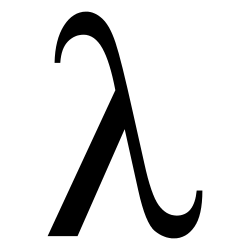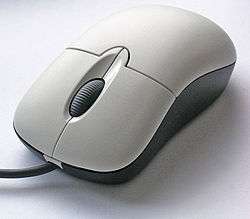Computer science
Computer science is the study of the theory, experimentation, and engineering that form the basis for the design and use of computers. It is the scientific and practical approach to computation and its applications and the systematic study of the feasibility, structure, expression, and mechanization of the methodical procedures (or algorithms) that underlie the acquisition, representation, processing, storage, communication of, and access to information. An alternate, more succinct definition of computer science is the study of automating algorithmic processes that scale. A computer scientist specializes in the theory of computation and the design of computational systems.[1]
Its fields can be divided into a variety of theoretical and practical disciplines. Some fields, such as computational complexity theory (which explores the fundamental properties of computational and intractable problems), are highly abstract, while fields such as computer graphics emphasize real-world visual applications. Other fields still focus on challenges in implementing computation. For example, programming language theory considers various approaches to the description of computation, while the study of computer programming itself investigates various aspects of the use of programming language and complex systems. Human–computer interaction considers the challenges in making computers and computations useful, usable, and universally accessible to humans.
History


The earliest foundations of what would become computer science predate the invention of the modern digital computer. Machines for calculating fixed numerical tasks such as the abacus have existed since antiquity, aiding in computations such as multiplication and division. Further, algorithms for performing computations have existed since antiquity, even before the development of sophisticated computing equipment.
Wilhelm Schickard designed and constructed the first working mechanical calculator in 1623.[2] In 1673, Gottfried Leibniz demonstrated a digital mechanical calculator, called the Stepped Reckoner.[3] He may be considered the first computer scientist and information theorist, for, among other reasons, documenting the binary number system. In 1820, Thomas de Colmar launched the mechanical calculator industry[note 1] when he released his simplified arithmometer, which was the first calculating machine strong enough and reliable enough to be used daily in an office environment. Charles Babbage started the design of the first automatic mechanical calculator, his Difference Engine, in 1822, which eventually gave him the idea of the first programmable mechanical calculator, his Analytical Engine.[4] He started developing this machine in 1834 and "in less than two years he had sketched out many of the salient features of the modern computer".[5] "A crucial step was the adoption of a punched card system derived from the Jacquard loom"[5] making it infinitely programmable.[note 2] In 1843, during the translation of a French article on the Analytical Engine, Ada Lovelace wrote, in one of the many notes she included, an algorithm to compute the Bernoulli numbers, which is considered to be the first computer program.[6] Around 1885, Herman Hollerith invented the tabulator, which used punched cards to process statistical information; eventually his company became part of IBM. In 1937, one hundred years after Babbage's impossible dream, Howard Aiken convinced IBM, which was making all kinds of punched card equipment and was also in the calculator business[7] to develop his giant programmable calculator, the ASCC/Harvard Mark I, based on Babbage's Analytical Engine, which itself used cards and a central computing unit. When the machine was finished, some hailed it as "Babbage's dream come true".[8]
During the 1940s, as new and more powerful computing machines were developed, the term computer came to refer to the machines rather than their human predecessors.[9] As it became clear that computers could be used for more than just mathematical calculations, the field of computer science broadened to study computation in general. Computer science began to be established as a distinct academic discipline in the 1950s and early 1960s.[10][11] The world's first computer science degree program, the Cambridge Diploma in Computer Science, began at the University of Cambridge Computer Laboratory in 1953. The first computer science degree program in the United States was formed at Purdue University in 1962.[12] Since practical computers became available, many applications of computing have become distinct areas of study in their own rights.
Although many initially believed it was impossible that computers themselves could actually be a scientific field of study, in the late fifties it gradually became accepted among the greater academic population.[13][14] It is the now well-known IBM brand that formed part of the computer science revolution during this time. IBM (short for International Business Machines) released the IBM 704[15] and later the IBM 709[16] computers, which were widely used during the exploration period of such devices. "Still, working with the IBM [computer] was frustrating […] if you had misplaced as much as one letter in one instruction, the program would crash, and you would have to start the whole process over again".[13] During the late 1950s, the computer science discipline was very much in its developmental stages, and such issues were commonplace.[14]
Time has seen significant improvements in the usability and effectiveness of computing technology.[17] Modern society has seen a significant shift in the users of computer technology, from usage only by experts and professionals, to a near-ubiquitous user base. Initially, computers were quite costly, and some degree of human aid was needed for efficient use—in part from professional computer operators. As computer adoption became more widespread and affordable, less human assistance was needed for common usage.
Contributions
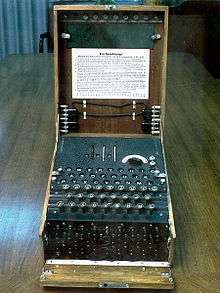
Despite its short history as a formal academic discipline, computer science has made a number of fundamental contributions to science and society—in fact, along with electronics, it is a founding science of the current epoch of human history called the Information Age and a driver of the Information Revolution, seen as the third major leap in human technological progress after the Industrial Revolution (1750–1850 CE) and the Agricultural Revolution (8000–5000 BC).
These contributions include:
- The start of the "digital revolution", which includes the current Information Age and the Internet.[19]
- A formal definition of computation and computability, and proof that there are computationally unsolvable and intractable problems.[20]
- The concept of a programming language, a tool for the precise expression of methodological information at various levels of abstraction.[21]
- In cryptography, breaking the Enigma code was an important factor contributing to the Allied victory in World War II.[18]
- Scientific computing enabled practical evaluation of processes and situations of great complexity, as well as experimentation entirely by software. It also enabled advanced study of the mind, and mapping of the human genome became possible with the Human Genome Project.[19] Distributed computing projects such as Folding@home explore protein folding.
- Algorithmic trading has increased the efficiency and liquidity of financial markets by using artificial intelligence, machine learning, and other statistical and numerical techniques on a large scale.[22] High frequency algorithmic trading can also exacerbate volatility.[23]
- Computer graphics and computer-generated imagery have become ubiquitous in modern entertainment, particularly in television, cinema, advertising, animation and video games. Even films that feature no explicit CGI are usually "filmed" now on digital cameras, or edited or post-processed using a digital video editor.[24][25]
- Simulation of various processes, including computational fluid dynamics, physical, electrical, and electronic systems and circuits, as well as societies and social situations (notably war games) along with their habitats, among many others. Modern computers enable optimization of such designs as complete aircraft. Notable in electrical and electronic circuit design are SPICE, as well as software for physical realization of new (or modified) designs. The latter includes essential design software for integrated circuits.
- Artificial intelligence is becoming increasingly important as it gets more efficient and complex. There are many applications of AI, some of which can be seen at home, such as robotic vacuum cleaners. It is also present in video games and on the modern battlefield in drones, anti-missile systems, and squad support robots.
Etymology
Although first proposed in 1956,[14] the term "computer science" appears in a 1959 article in Communications of the ACM,[26] in which Louis Fein argues for the creation of a Graduate School in Computer Sciences analogous to the creation of Harvard Business School in 1921,[27] justifying the name by arguing that, like management science, the subject is applied and interdisciplinary in nature, while having the characteristics typical of an academic discipline.[26] His efforts, and those of others such as numerical analyst George Forsythe, were rewarded: universities went on to create such programs, starting with Purdue in 1962.[28] Despite its name, a significant amount of computer science does not involve the study of computers themselves. Because of this, several alternative names have been proposed.[29] Certain departments of major universities prefer the term computing science, to emphasize precisely that difference. Danish scientist Peter Naur suggested the term datalogy,[30] to reflect the fact that the scientific discipline revolves around data and data treatment, while not necessarily involving computers. The first scientific institution to use the term was the Department of Datalogy at the University of Copenhagen, founded in 1969, with Peter Naur being the first professor in datalogy. The term is used mainly in the Scandinavian countries. An alternative term, also proposed by Naur, is data science; this is now used for a distinct field of data analysis, including statistics and databases.
Also, in the early days of computing, a number of terms for the practitioners of the field of computing were suggested in the Communications of the ACM—turingineer, turologist, flow-charts-man, applied meta-mathematician, and applied epistemologist.[31] Three months later in the same journal, comptologist was suggested, followed next year by hypologist.[32] The term computics has also been suggested.[33] In Europe, terms derived from contracted translations of the expression "automatic information" (e.g. "informazione automatica" in Italian) or "information and mathematics" are often used, e.g. informatique (French), Informatik (German), informatica (Italian, Dutch), informática (Spanish, Portuguese), informatika (Slavic languages and Hungarian) or pliroforiki (πληροφορική, which means informatics) in Greek. Similar words have also been adopted in the UK (as in the School of Informatics of the University of Edinburgh).[34] "In the U.S., however, informatics is linked with applied computing, or computing in the context of another domain."[35]
A folkloric quotation, often attributed to—but almost certainly not first formulated by—Edsger Dijkstra, states that "computer science is no more about computers than astronomy is about telescopes."[note 3] The design and deployment of computers and computer systems is generally considered the province of disciplines other than computer science. For example, the study of computer hardware is usually considered part of computer engineering, while the study of commercial computer systems and their deployment is often called information technology or information systems. However, there has been much cross-fertilization of ideas between the various computer-related disciplines. Computer science research also often intersects other disciplines, such as philosophy, cognitive science, linguistics, mathematics, physics, biology, statistics, and logic.
Computer science is considered by some to have a much closer relationship with mathematics than many scientific disciplines, with some observers saying that computing is a mathematical science.[10] Early computer science was strongly influenced by the work of mathematicians such as Kurt Gödel and Alan Turing, and there continues to be a useful interchange of ideas between the two fields in areas such as mathematical logic, category theory, domain theory, and algebra.[14]
The relationship between computer science and software engineering is a contentious issue, which is further muddied by disputes over what the term "software engineering" means, and how computer science is defined.[36] David Parnas, taking a cue from the relationship between other engineering and science disciplines, has claimed that the principal focus of computer science is studying the properties of computation in general, while the principal focus of software engineering is the design of specific computations to achieve practical goals, making the two separate but complementary disciplines.[37]
The academic, political, and funding aspects of computer science tend to depend on whether a department formed with a mathematical emphasis or with an engineering emphasis. Computer science departments with a mathematics emphasis and with a numerical orientation consider alignment with computational science. Both types of departments tend to make efforts to bridge the field educationally if not across all research.
Philosophy
A number of computer scientists have argued for the distinction of three separate paradigms in computer science. Peter Wegner argued that those paradigms are science, technology, and mathematics.[38] Peter Denning's working group argued that they are theory, abstraction (modeling), and design.[39] Amnon H. Eden described them as the "rationalist paradigm" (which treats computer science as a branch of mathematics, which is prevalent in theoretical computer science, and mainly employs deductive reasoning), the "technocratic paradigm" (which might be found in engineering approaches, most prominently in software engineering), and the "scientific paradigm" (which approaches computer-related artifacts from the empirical perspective of natural sciences, identifiable in some branches of artificial intelligence).[40]
Areas of computer science
As a discipline, computer science spans a range of topics from theoretical studies of algorithms and the limits of computation to the practical issues of implementing computing systems in hardware and software.[41][42] CSAB, formerly called Computing Sciences Accreditation Board—which is made up of representatives of the Association for Computing Machinery (ACM), and the IEEE Computer Society (IEEE CS)[43]—identifies four areas that it considers crucial to the discipline of computer science: theory of computation, algorithms and data structures, programming methodology and languages, and computer elements and architecture. In addition to these four areas, CSAB also identifies fields such as software engineering, artificial intelligence, computer networking and communication, database systems, parallel computation, distributed computation, human–computer interaction, computer graphics, operating systems, and numerical and symbolic computation as being important areas of computer science.[41]
Theoretical computer science
Theoretical Computer Science is mathematical and abstract in spirit, but it derives its motivation from practical and everyday computation. Its aim is to understand the nature of computation and, as a consequence of this understanding, provide more efficient methodologies. All papers introducing or studying mathematical, logic and formal concepts and methods are welcome, provided that their motivation is clearly drawn from the field of computing.
Theory of computation
According to Peter Denning, the fundamental question underlying computer science is, "What can be (efficiently) automated?"[10] Theory of computation is focused on answering fundamental questions about what can be computed and what amount of resources are required to perform those computations. In an effort to answer the first question, computability theory examines which computational problems are solvable on various theoretical models of computation. The second question is addressed by computational complexity theory, which studies the time and space costs associated with different approaches to solving a multitude of computational problems.
The famous P = NP? problem, one of the Millennium Prize Problems,[44] is an open problem in the theory of computation.
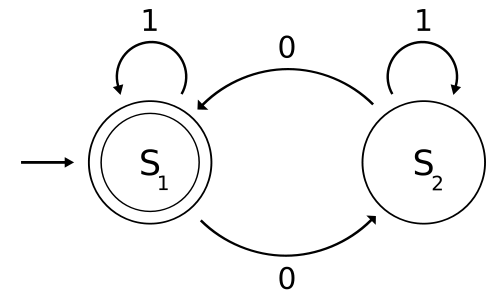 |
|
P = NP? | GNITIRW-TERCES |  |
| Automata theory | Computability theory | Computational complexity theory | Cryptography | Quantum computing theory |
Information and coding theory
Information theory is related to the quantification of information. This was developed by Claude Shannon to find fundamental limits on signal processing operations such as compressing data and on reliably storing and communicating data.[45] Coding theory is the study of the properties of codes (systems for converting information from one form to another) and their fitness for a specific application. Codes are used for data compression, cryptography, error detection and correction, and more recently also for network coding. Codes are studied for the purpose of designing efficient and reliable data transmission methods.
Algorithms and data structures
Algorithms and data structures is the study of commonly used computational methods and their computational efficiency.
| O(n2) | 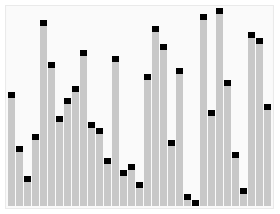 |
|
 |
 |
| Analysis of algorithms | Algorithms | Data structures | Combinatorial optimization | Computational geometry |
Programming language theory
Programming language theory is a branch of computer science that deals with the design, implementation, analysis, characterization, and classification of programming languages and their individual features. It falls within the discipline of computer science, both depending on and affecting mathematics, software engineering, and linguistics. It is an active research area, with numerous dedicated academic journals.
 |
 | |
| Type theory | Compiler design | Programming languages |
Formal methods
Formal methods are a particular kind of mathematically based technique for the specification, development and verification of software and hardware systems. The use of formal methods for software and hardware design is motivated by the expectation that, as in other engineering disciplines, performing appropriate mathematical analysis can contribute to the reliability and robustness of a design. They form an important theoretical underpinning for software engineering, especially where safety or security is involved. Formal methods are a useful adjunct to software testing since they help avoid errors and can also give a framework for testing. For industrial use, tool support is required. However, the high cost of using formal methods means that they are usually only used in the development of high-integrity and life-critical systems, where safety or security is of utmost importance. Formal methods are best described as the application of a fairly broad variety of theoretical computer science fundamentals, in particular logic calculi, formal languages, automata theory, and program semantics, but also type systems and algebraic data types to problems in software and hardware specification and verification.
Applied computer science
Applied computer science aims at identifying certain computer science concepts that can be used directly in solving real world problems.
Artificial intelligence
Artificial intelligence (AI) aims to or is required to synthesize goal-orientated processes such as problem-solving, decision-making, environmental adaptation, learning and communication found in humans and animals. From its origins in cybernetics and in the Dartmouth Conference (1956), artificial intelligence research has been necessarily cross-disciplinary, drawing on areas of expertise such as applied mathematics, symbolic logic, semiotics, electrical engineering, philosophy of mind, neurophysiology, and social intelligence. AI is associated in the popular mind with robotic development, but the main field of practical application has been as an embedded component in areas of software development, which require computational understanding. The starting-point in the late 1940s was Alan Turing's question "Can computers think?", and the question remains effectively unanswered although the Turing test is still used to assess computer output on the scale of human intelligence. But the automation of evaluative and predictive tasks has been increasingly successful as a substitute for human monitoring and intervention in domains of computer application involving complex real-world data.
 |
 |
 |
| Machine learning | Computer vision | Image processing |
 |
 |
|
| Pattern recognition | Data mining | Evolutionary computation |
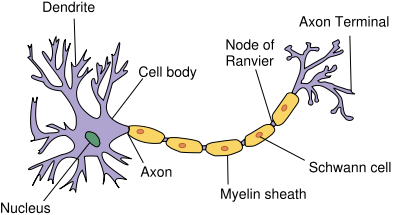 |
 |
 |
| Knowledge representation | Natural language processing | Robotics |
Computer architecture and engineering
Computer architecture, or digital computer organization, is the conceptual design and fundamental operational structure of a computer system. It focuses largely on the way by which the central processing unit performs internally and accesses addresses in memory.[46] The field often involves disciplines of computer engineering and electrical engineering, selecting and interconnecting hardware components to create computers that meet functional, performance, and cost goals.
| |
|
 |
| Digital logic | Microarchitecture | Multiprocessing |
 |
 |
 |
| Ubiquitous computing | Systems architecture | Operating systems |
Computer performance analysis
Computer performance analysis is the study of work flowing through computers with the general goals of improving throughput, controlling response time, using resources efficiently, eliminating bottlenecks, and predicting performance under anticipated peak loads.[47]
Computer graphics and visualization
Computer graphics is the study of digital visual contents, and involves synthesis and manipulation of image data. The study is connected to many other fields in computer science, including computer vision, image processing, and computational geometry, and is heavily applied in the fields of special effects and video games.
Computer security and cryptography
Computer security is a branch of computer technology, whose objective includes protection of information from unauthorized access, disruption, or modification while maintaining the accessibility and usability of the system for its intended users. Cryptography is the practice and study of hiding (encryption) and therefore deciphering (decryption) information. Modern cryptography is largely related to computer science, for many encryption and decryption algorithms are based on their computational complexity.
Computational science
Computational science (or scientific computing) is the field of study concerned with constructing mathematical models and quantitative analysis techniques and using computers to analyze and solve scientific problems. In practical use, it is typically the application of computer simulation and other forms of computation to problems in various scientific disciplines.
 |
 |
 |
 |
| Numerical analysis | Computational physics | Computational chemistry | Bioinformatics |
Computer networks
This branch of computer science aims to manage networks between computers worldwide.
Concurrent, parallel and distributed systems
Concurrency is a property of systems in which several computations are executing simultaneously, and potentially interacting with each other. A number of mathematical models have been developed for general concurrent computation including Petri nets, process calculi and the Parallel Random Access Machine model. A distributed system extends the idea of concurrency onto multiple computers connected through a network. Computers within the same distributed system have their own private memory, and information is often exchanged among themselves to achieve a common goal.
Databases
A database is intended to organize, store, and retrieve large amounts of data easily. Digital databases are managed using database management systems to store, create, maintain, and search data, through database models and query languages.
Software engineering
Software engineering is the study of designing, implementing, and modifying software in order to ensure it is of high quality, affordable, maintainable, and fast to build. It is a systematic approach to software design, involving the application of engineering practices to software. Software engineering deals with the organizing and analyzing of software—it doesn't just deal with the creation or manufacture of new software, but its internal maintenance and arrangement. Both computer applications software engineers and computer systems software engineers are projected to be among the fastest growing occupations from 2008 to 2018.
The great insights of computer science
The philosopher of computing Bill Rapaport noted three Great Insights of Computer Science:[48]
- Gottfried Wilhelm Leibniz's, George Boole's, Alan Turing's, Claude Shannon's, and Samuel Morse's insight: there are only two objects that a computer has to deal with in order to represent "anything".
- All the information about any computable problem can be represented using only 0 and 1 (or any other bistable pair that can flip-flop between two easily distinguishable states, such as "on/off", "magnetized/de-magnetized", "high-voltage/low-voltage", etc.).
- Alan Turing's insight: there are only five actions that a computer has to perform in order to do "anything".
- Every algorithm can be expressed in a language for a computer consisting of only five basic instructions:
- move left one location;
- move right one location;
- read symbol at current location;
- print 0 at current location;
- print 1 at current location.
- Every algorithm can be expressed in a language for a computer consisting of only five basic instructions:
- Corrado Böhm and Giuseppe Jacopini's insight: there are only three ways of combining these actions (into more complex ones) that are needed in order for a computer to do "anything".
- Only three rules are needed to combine any set of basic instructions into more complex ones:
- sequence: first do this, then do that;
- selection: IF such-and-such is the case, THEN do this, ELSE do that;
- repetition: WHILE such-and-such is the case DO this.
- Note that the three rules of Boehm's and Jacopini's insight can be further simplified with the use of goto (which means it is more elementary than structured programming).
- Only three rules are needed to combine any set of basic instructions into more complex ones:
Academia
Conferences are important events for computer science research. During these conferences, researchers from the public and private sectors present their recent work and meet. Unlike in most other academic fields, in computer science, the prestige of conference papers is greater than that of journal publications.[49][50] One proposed explanation for this is the quick development of this relatively new field requires rapid review and distribution of results, a task better handled by conferences than by journals.[51]
Education
Since computer science is a relatively new field, it is not as widely taught in schools and universities as other academic subjects. For example, in 2014, Code.org estimated that only 10 percent of high schools in the United States offered computer science education.[52] A 2010 report by Association for Computing Machinery (ACM) and Computer Science Teachers Association (CSTA) revealed that only 14 out of 50 states have adopted significant education standards for high school computer science.[53] However, computer science education is growing.[54] Some countries, such as Israel, New Zealand and South Korea, have already included computer science in their respective national secondary education curriculum.[55][56] Several countries are following suit.[57][58]
In most countries, there is a significant gender gap in computer science education. For example, in the US about 20% of computer science degrees in 2012 were conferred to women.[59] This gender gap also exists in other Western countries.[60] However, in some parts of the world, the gap is small or nonexistent. In 2011, approximately half of all computer science degrees in Malaysia were conferred to women.[61] In 2001, women made up 54.5% of computer science graduates in Guyana.[60]
See also
- Academic genealogy of computer scientists
- Association for Computing Machinery
- Computer Science Teachers Association
- Informatics and Engineering informatics
- List of academic computer science departments
- List of computer scientists
- List of publications in computer science
- List of pioneers in computer science
- List of unsolved problems in computer science
- Outline of software engineering
- Technology transfer in computer science
- Turing Award
![]() Computer science – Wikipedia book
Computer science – Wikipedia book
Notes
- ↑ In 1851
- ↑ "The introduction of punched cards into the new engine was important not only as a more convenient form of control than the drums, or because programs could now be of unlimited extent, and could be stored and repeated without the danger of introducing errors in setting the machine by hand; it was important also because it served to crystallize Babbage's feeling that he had invented something really new, something much more than a sophisticated calculating machine." Bruce Collier, 1970
- ↑ See the entry "Computer science" on Wikiquote for the history of this quotation.
References
- ↑ "WordNet Search—3.1". Wordnetweb.princeton.edu. Retrieved 2012-05-14.
- ↑ "Wilhelm Schickard - Ein Computerpionier" (PDF).
- ↑ "A Brief History of Computing".
- ↑ "Science Museum—Introduction to Babbage". Archived from the original on 2006-09-08. Retrieved 2006-09-24.
- 1 2 Anthony Hyman (1982). Charles Babbage, pioneer of the computer.
- ↑ "A Selection and Adaptation From Ada's Notes found in Ada, The Enchantress of Numbers," by Betty Alexandra Toole Ed.D. Strawberry Press, Mill Valley, CA". Archived from the original on February 10, 2006. Retrieved 2006-05-04.
- ↑ "In this sense Aiken needed IBM, whose technology included the use of punched cards, the accumulation of numerical data, and the transfer of numerical data from one register to another", Bernard Cohen, p.44 (2000)
- ↑ Brian Randell, p. 187, 1975
- ↑ The Association for Computing Machinery (ACM) was founded in 1947.
- 1 2 3 Denning, Peter J. (2000). "Computer Science: The Discipline" (PDF). Encyclopedia of Computer Science. Archived from the original (PDF) on 2006-05-25.
- ↑ "Some EDSAC statistics". Cl.cam.ac.uk. Retrieved 2011-11-19.
- ↑ "Computer science pioneer Samuel D. Conte dies at 85". Purdue Computer Science. July 1, 2002. Retrieved December 12, 2014.
- 1 2 Levy, Steven (1984). Hackers: Heroes of the Computer Revolution. Doubleday. ISBN 0-385-19195-2.
- 1 2 3 4 Tedre, Matti (2014). The Science of Computing: Shaping a Discipline. Taylor and Francis / CRC Press.
- ↑ "IBM 704 Electronic Data Processing System—CHM Revolution". Computerhistory.org. Retrieved 2013-07-07.
- ↑ "IBM 709: a powerful new data processing system" (PDF). Computer History Museum. Retrieved December 12, 2014.
- ↑ "Timeline of Computer History". Computer History Museum. Retrieved November 24, 2015.
- 1 2 David Kahn, The Codebreakers, 1967, ISBN 0-684-83130-9.
- 1 2 "Computer Science : Achievements and Challenges circa 2000" (PDF). Archived from the original (PDF) on September 11, 2006. Retrieved January 11, 2007.
- ↑ Constable, R. L. (March 2000). "Computer Science: Achievements and Challenges circa 2000" (PDF).
- ↑ Abelson, H.; G.J. Sussman with J. Sussman (1996). Structure and Interpretation of Computer Programs (2nd ed.). MIT Press. ISBN 0-262-01153-0.
The computer revolution is a revolution in the way we think and in the way we express what we think. The essence of this change is the emergence of what might best be called procedural epistemology — the study of the structure of knowledge from an imperative point of view, as opposed to the more declarative point of view taken by classical mathematical subjects.
- ↑ "Black box traders are on the march". The Telegraph. August 26, 2006. Archived from the original on June 21, 2008.
- ↑ "The Impact of High Frequency Trading on an Electronic Market". Papers.ssrn.com. doi:10.2139/ssrn.1686004. Retrieved 2012-05-14.
- ↑ Maly, Timy. "How Digital Filmmakers Produced a Gorgeous Sci-Fi Movie on a Kickstarter Budget". Wired. Retrieved November 24, 2015.
- ↑ Matthau, Charles. "How Tech Has Shaped Film Making: The Film vs. Digital Debate Is Put to Rest". Wired. Retrieved November 24, 2015.
- 1 2 Louis Fine (1959). "The Role of the University in Computers, Data Processing, and Related Fields". Communications of the ACM. 2 (9): 7–14. doi:10.1145/368424.368427.
- ↑ "Stanford University Oral History". Stanford University. Retrieved May 30, 2013.
- ↑ Donald Knuth (1972). "George Forsythe and the Development of Computer Science". Comms. ACM. Archived October 20, 2013, at the Wayback Machine.
- ↑ Matti Tedre (2006). "The Development of Computer Science: A Sociocultural Perspective" (PDF). p. 260. Retrieved December 12, 2014.
- ↑ Peter Naur (1966). "The science of datalogy". Communications of the ACM. 9 (7): 485. doi:10.1145/365719.366510.
- ↑ Weiss, E. A.; Corley, Henry P. T. "Communications of the ACM". Communications of the ACM. 1 (4): 6. doi:10.1145/368796.368802.
- ↑ Communications of the ACM 2(1):p.4
- ↑ IEEE Computer 28(12):p.136
- ↑ P. Mounier-Kuhn, L'Informatique en France, de la seconde guerre mondiale au Plan Calcul. L'émergence d'une science, Paris, PUPS, 2010, ch. 3 & 4.
- ↑
- ↑ Tedre, M. (2011). "Computing as a Science: A Survey of Competing Viewpoints". Minds and Machines. 21 (3): 361–387. doi:10.1007/s11023-011-9240-4.
- ↑ Parnas, D. L. (1998). "Software engineering programmes are not computer science programmes". Annals of Software Engineering. 6: 19–37. doi:10.1023/A:1018949113292., p. 19: "Rather than treat software engineering as a subfield of computer science, I treat it as an element of the set, Civil Engineering, Mechanical Engineering, Chemical Engineering, Electrical Engineering, […]"
- ↑ Wegner, P. (October 13–15, 1976). Research paradigms in computer science—Proceedings of the 2nd international Conference on Software Engineering. San Francisco, California, United States: IEEE Computer Society Press, Los Alamitos, CA.
- ↑ Denning, P. J.; Comer, D. E.; Gries, D.; Mulder, M. C.; Tucker, A.; Turner, A. J.; Young, P. R. (Jan 1989). "Computing as a discipline". Communications of the ACM. 32: 9–23. doi:10.1145/63238.63239.
- ↑ Eden, A. H. (2007). "Three Paradigms of Computer Science" (PDF). Minds and Machines. 17 (2): 135–167. doi:10.1007/s11023-007-9060-8.
- 1 2 Computing Sciences Accreditation Board (May 28, 1997). "Computer Science as a Profession". Archived from the original on 2008-06-17. Retrieved 2010-05-23.
- ↑ Committee on the Fundamentals of Computer Science: Challenges and Opportunities, National Research Council (2004). Computer Science: Reflections on the Field, Reflections from the Field. National Academies Press. ISBN 978-0-309-09301-9.
- ↑ "CSAB Leading Computer Education". CSAB. 2011-08-03. Retrieved 2011-11-19.
- ↑ Clay Mathematics Institute P = NP Archived October 14, 2013, at the Wayback Machine.
- ↑ P. Collins, Graham (October 14, 2002). "Claude E. Shannon: Founder of Information Theory". Scientific American. Retrieved December 12, 2014.
- ↑ A. Thisted, Ronald (April 7, 1997). "Computer Architecture" (PDF). The University of Chicago.
- ↑ Wescott, Bob (2013). The Every Computer Performance Book, Chapter 3: Useful laws. CreateSpace. ISBN 1482657759.
- ↑ "What Is Computation?". buffalo.edu.
- ↑ Meyer, Bertrand (April 2009). "Viewpoint: Research evaluation for computer science". Communications of the ACM. 25 (4): 31–34. doi:10.1145/1498765.1498780.
- ↑ Patterson, David (August 1999). "Evaluating Computer Scientists and Engineers For Promotion and Tenure". Computing Research Association.
- ↑ Fortnow, Lance (August 2009). "Viewpoint: Time for Computer Science to Grow Up". Communications of the ACM. 52 (8): 33–35. doi:10.1145/1536616.1536631.
- ↑ "Computer Science: Not Just an Elective Anymore". Education Week. February 25, 2014.
- ↑ "Running On Empty" (PDF). October 2010.
- ↑ "How to Teach Computational Thinking—Stephen Wolfram Blog". blog.stephenwolfram.com. Retrieved 2016-09-16.
- ↑ "A is for algorithm". The Economist. April 26, 2014.
- ↑ "Computing at School International comparisons" (PDF). Retrieved 20 July 2015.
- ↑ Scott, Michael; Ghinea, Gheorghita (17 April 2013). Educating Programmers: A Reflection on Barriers to Deliberate Practice (pdf). Proceedings of the 2nd HEA Conference on Learning and Teaching in STEM Disciplines. HEA. pp. 85–90. doi:10.11120/stem.hea.2013.0005. Retrieved March 25, 2016.
- ↑ "Adding Coding to the Curriculum". New York Times. March 23, 2014.
- ↑ "IT gender gap: Where are the female programmers?". Retrieved 20 July 2015.
- 1 2 "IT gender gap: Where are the female programmers?".
- ↑ "what gender is science" (PDF). Retrieved 20 July 2015.
Further reading
- Overview
- Tucker, Allen B. (2004). Computer Science Handbook (2nd ed.). Chapman and Hall/CRC. ISBN 1-58488-360-X.
- "Within more than 70 chapters, every one new or significantly revised, one can find any kind of information and references about computer science one can imagine. […] all in all, there is absolute nothing about Computer Science that can not be found in the 2.5 kilogram-encyclopaedia with its 110 survey articles […]." (Christoph Meinel, Zentralblatt MATH)
- van Leeuwen, Jan (1994). Handbook of Theoretical Computer Science. The MIT Press. ISBN 0-262-72020-5.
- "[…] this set is the most unique and possibly the most useful to the [theoretical computer science] community, in support both of teaching and research […]. The books can be used by anyone wanting simply to gain an understanding of one of these areas, or by someone desiring to be in research in a topic, or by instructors wishing to find timely information on a subject they are teaching outside their major areas of expertise." (Rocky Ross, SIGACT News)
- Ralston, Anthony; Reilly, Edwin D.; Hemmendinger, David (2000). Encyclopedia of Computer Science (4th ed.). Grove's Dictionaries. ISBN 1-56159-248-X.
- "Since 1976, this has been the definitive reference work on computer, computing, and computer science. […] Alphabetically arranged and classified into broad subject areas, the entries cover hardware, computer systems, information and data, software, the mathematics of computing, theory of computation, methodologies, applications, and computing milieu. The editors have done a commendable job of blending historical perspective and practical reference information. The encyclopedia remains essential for most public and academic library reference collections." (Joe Accardin, Northeastern Illinois Univ., Chicago)
- Edwin D. Reilly (2003). Milestones in Computer Science and Information Technology. Greenwood Publishing Group. ISBN 978-1-57356-521-9.
- Selected literature
- Knuth, Donald E. (1996). Selected Papers on Computer Science. CSLI Publications, Cambridge University Press.
- Collier, Bruce. The little engine that could've: The calculating machines of Charles Babbage. Garland Publishing Inc. ISBN 0-8240-0043-9.
- Cohen, Bernard (2000). Howard Aiken, Portrait of a computer pioneer. The MIT press. ISBN 978-0-2625317-9-5.
- Tedre, Matti (2014). The Science of Computing: Shaping a Discipline. CRC Press, Taylor & Francis.
- Randell, Brian (1973). The origins of Digital computers, Selected Papers. Springer-Verlag. ISBN 3-540-06169-X.
- "Covering a period from 1966 to 1993, its interest lies not only in the content of each of these papers — still timely today — but also in their being put together so that ideas expressed at different times complement each other nicely." (N. Bernard, Zentralblatt MATH)
- Articles
- Peter J. Denning. Is computer science science?, Communications of the ACM, April 2005.
- Peter J. Denning, Great principles in computing curricula, Technical Symposium on Computer Science Education, 2004.
- Research evaluation for computer science, Informatics Europe report. Shorter journal version: Bertrand Meyer, Christine Choppy, Jan van Leeuwen and Jorgen Staunstrup, Research evaluation for computer science, in Communications of the ACM, vol. 52, no. 4, pp. 31–34, April 2009.
- Curriculum and classification
- Association for Computing Machinery. 1998 ACM Computing Classification System. 1998.
- Joint Task Force of Association for Computing Machinery (ACM), Association for Information Systems (AIS) and IEEE Computer Society (IEEE CS). Computing Curricula 2005: The Overview Report. September 30, 2005.
- Norman Gibbs, Allen Tucker. "A model curriculum for a liberal arts degree in computer science". Communications of the ACM, Volume 29 Issue 3, March 1986.
External links
| Library resources about Computer science |
- Computer science at DMOZ
- Scholarly Societies in Computer Science
- What is Computer Science?
- Best Papers Awards in Computer Science since 1996
- Photographs of computer scientists by Bertrand Meyer
- EECS.berkeley.edu
- Bibliography and academic search engines
- CiteSeerx (article): search engine, digital library and repository for scientific and academic papers with a focus on computer and information science.
- DBLP Computer Science Bibliography (article): computer science bibliography website hosted at Universität Trier, in Germany.
- The Collection of Computer Science Bibliographies (article)
- Professional organizations
- Association for Computing Machinery
- IEEE Computer Society
- Informatics Europe
- AAAI
- AAAS Computer Science
- Misc
- Computer Science—Stack Exchange: a community-run question-and-answer site for computer science
- What is computer science
- Is computer science science?
- Computer Science (Software) Must be Considered as an Independent Discipline.
- ↑ "Computer Science". ComputerGK.com.
